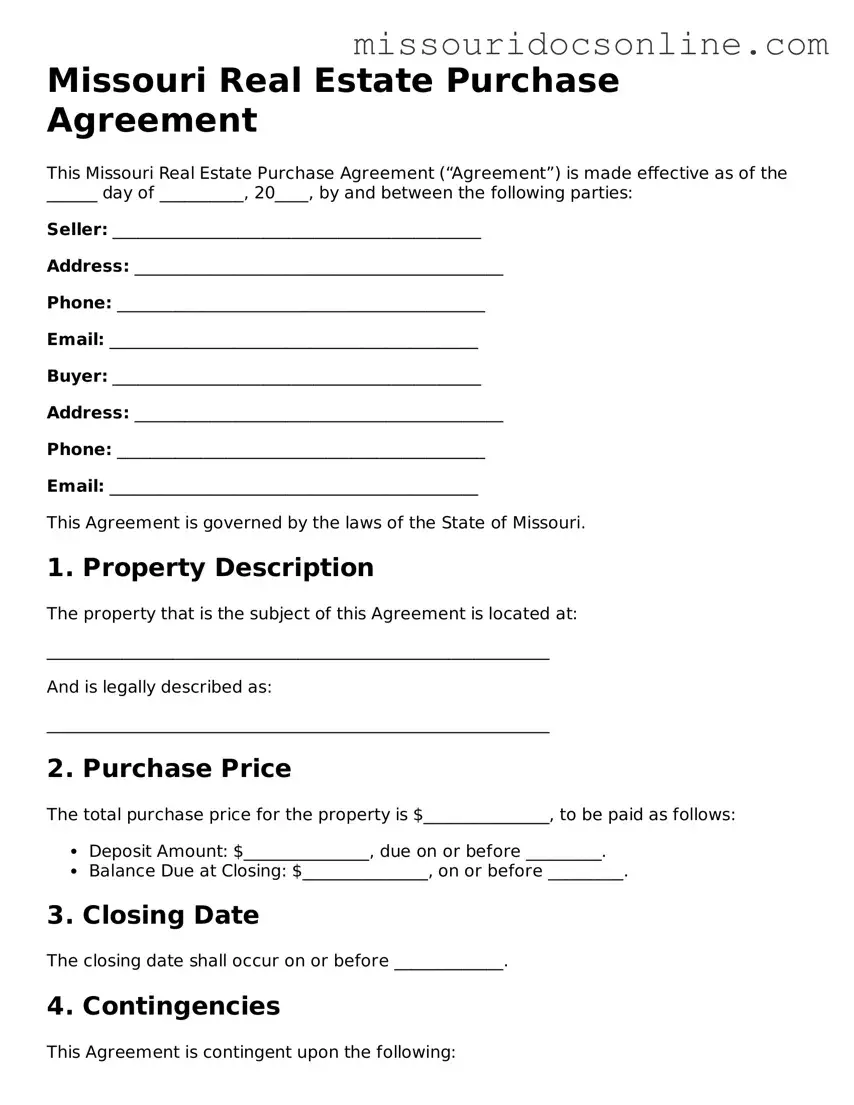Attorney-Approved Real Estate Purchase Agreement Form for Missouri State
The Missouri Real Estate Purchase Agreement form is a legal document that outlines the terms and conditions under which a property is bought and sold in Missouri. This agreement serves as a binding contract between the buyer and seller, detailing essential elements such as purchase price, contingencies, and closing dates. For those looking to navigate the real estate market in Missouri, understanding and completing this form is a crucial step.
To begin the process, fill out the form by clicking the button below.
Access Real Estate Purchase Agreement Editor
